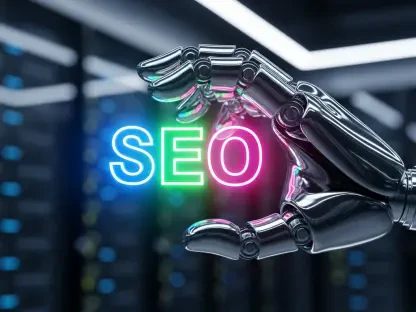Chief Marketing Officers (CMOs) have faced a rapidly changing landscape, both navigating the challenges of the COVID-19 pandemic and encountering the rapid rise of artificial intelligence (AI). These unprecedented challenges demand innovative strategies and adaptive thinking to stay competitive in the dynamic market. The need for resilience and foresight has never been greater, as CMOs must balance traditional marketing approaches with the integration of AI technologies to drive sustainable growth.
Navigating Change and Uncertainty
About two-thirds of CMOs in Fortune 500 companies managed to advance or move laterally in their careers despite the significant challenges presented by the pandemic. This resilience demonstrates their capacity to adapt to significant disruptions and underscores the importance of versatile leadership. However, the introduction and rapid evolution of AI have brought about an even more complex array of challenges. This technological advancement can be likened to an Olympic steeplechase, with the pace and complexity of obstacles intensifying continuously.
The dynamic nature of AI evolution demands that CMOs adopt agile and forward-thinking strategies. The ability to swiftly pivot and embrace new technologies is crucial, as the margin for error narrows with the speed of market changes. Successfully navigating these challenges requires a deep understanding of AI’s capabilities and limitations, as well as a strategic framework that can incorporate these insights into actionable plans.
The Flywheel Model: A Strategic Framework
The flywheel model offers a customer-centric approach to business growth, which can be significantly enhanced through the integration of AI. This model centers around building and maintaining momentum, where satisfied customers drive referrals and repeat business, fueling sustained growth. By incorporating AI into this model, CMOs can modernize their marketing strategies, leading to improved efficiency and effectiveness.
The flywheel model revolves around four interconnected pillars: Measurement and Insights, Media and Personalization, Creativity and Content, and People and Process. These pillars provide a structured approach that can help CMOs navigate the complexities of the AI landscape. When effectively integrated, these pillars form a cohesive system that amplifies the traditional flywheel, creating an AI-powered Marketing Engine.
Measurement and Insights
Modern AI-powered measurement tools are crucial for aligning key performance indicators (KPIs) with business performance metrics like profit and return on investment (ROI). Accurate data and insights are vital for informed decision-making, enabling CMOs to evaluate the impact of their marketing efforts and adjust strategies accordingly. AI tools enhance this process by providing more precise measurements while respecting privacy and data protection regulations.
Furthermore, AI-driven tools can analyze vast amounts of data at unprecedented speeds, allowing for real-time insights that were previously unattainable. This capability enables CMOs to make data-driven decisions swiftly, optimizing campaigns and strategies to maximize ROI. The integration of AI in this pillar not only improves the accuracy of measurements but also enhances the overall strategic planning process.
Media and Personalization
AI enables highly targeted advertising by identifying and engaging high-value audiences across various platforms. Utilizing AI for personalized media strategies ensures that marketing messages reach the right audience effectively, increasing engagement and conversion rates. Advanced algorithms can sift through vast datasets to uncover patterns and preferences, enabling marketers to tailor their messages to specific audience segments.
Moreover, AI-driven personalization extends beyond targeted advertising. It allows for dynamic content adjustments, optimizing user experiences in real-time. By leveraging AI, CMOs can create highly relevant and engaging media strategies that resonate with their audiences, fostering stronger brand loyalty and customer retention. The combination of precision targeting and dynamic personalization is key to achieving impactful marketing outcomes.
Creativity and Content
AI assists in generating innovative content ideas and optimizing top-performing assets, accelerating time-to-market and maintaining a competitive edge. For instance, AI can analyze consumer trends and preferences, suggesting creative directions that are more likely to resonate with the target audience. This capability not only enhances creativity but also ensures that content strategies are data-driven and aligned with consumer expectations.
Additionally, AI-powered tools enable pre-launch testing and revisions, allowing marketers to fine-tune their content before it goes live. This iterative process ensures that only the most effective content reaches the audience, maximizing impact. By integrating AI into the creativity and content pillar, CMOs can elevate their content strategies, producing more compelling and effective marketing materials.
People and Process
Collaboration and organizational restructuring are essential to harness the full potential of AI. Investing in AI talent and developing new operational methods are key steps toward effective integration. Building teams with diverse skill sets, including data scientists and AI specialists, ensures that organizations can fully leverage AI capabilities. Furthermore, fostering a culture of collaboration between marketing and technical teams is crucial for successful AI implementation.
Organizational restructuring may involve redefining roles and processes to align with AI-driven workflows. This includes adopting agile methodologies that allow for rapid experimentation and iteration. By restructuring processes and investing in the right talent, organizations can create an environment where AI can thrive, driving innovation and efficiency in marketing efforts.
The AI-Powered Marketing Engine
When these pillars are combined, they form an AI-powered Marketing Engine, amplifying the traditional flywheel model. This engine enables continuous real-time optimization and refinement of marketing efforts based on ongoing measurements. By leveraging AI, CMOs can create a dynamic marketing system that adapts to changing conditions and continuously improves performance.
The AI-powered Marketing Engine allows for autonomous media plan refinement, adjusting campaigns in real-time based on performance data. This capability ensures that resources are allocated effectively, maximizing ROI and minimizing wasted spend. The continuous feedback loop created by the AI-powered Marketing Engine drives ongoing optimization, ensuring that marketing strategies remain effective and relevant.
Audience and Market Research
Understanding audience behavior and market trends is crucial for developing effective marketing strategies. Comprehensive audience research focuses on individual preferences, while market research offers a broader macroeconomic perspective. AI tools can enhance both types of research by providing deeper insights and more accurate predictions.
Audience research involves analyzing data to understand consumer preferences, behaviors, and engagement patterns. AI can process vast amounts of data to identify trends and insights that would be impossible to uncover manually. This level of understanding allows marketers to tailor their strategies to meet the needs and preferences of their audience, creating more personalized and impactful marketing campaigns.
Market research, on the other hand, provides a macro-level view of the industry and competitive landscape. AI tools can analyze market data to identify trends, opportunities, and potential threats. By combining insights from both audience and market research, CMOs can develop holistic strategies that address both consumer needs and market dynamics.
Actionable Insights Over Data Output
It’s essential to differentiate between Reporting Squirrels (data producers) and Analysis Ninjas (insight generators). While data producers focus on collecting and reporting data, insight generators analyze this data to provide actionable recommendations. Actionable insights are more valuable than mere data output, driving business performance and informing strategic decisions.
AI tools can enhance the role of both data producers and insight generators by automating data collection and analysis. This allows marketers to focus on interpreting the insights and making strategic decisions. By prioritizing actionable insights over raw data, CMOs can ensure that their marketing strategies are driven by meaningful and impactful information.
The Zero Moment of Truth (ZMOT)
Chief Marketing Officers (CMOs) have been navigating an increasingly complex landscape, driven by the challenges of the COVID-19 pandemic and the rapid rise of artificial intelligence (AI). These unprecedented changes require CMOs to adopt innovative strategies and cultivate adaptive thinking to remain competitive in the ever-evolving market. The need for resilience and foresight has reached an all-time high, as CMOs must strategically balance traditional marketing methods with the integration of cutting-edge AI technologies. This blend aims to achieve sustainable growth and meet the evolving demands of consumers. Successful CMOs are those who can harness the full potential of AI to optimize their marketing efforts, from personalized customer experiences to predictive analytics, all while maintaining the human touch that is essential in building strong customer relationships. The future of marketing lies at the intersection of technology and creativity, and CMOs who can adeptly navigate this intersection are poised to lead their organizations to new heights.









